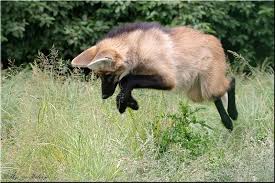“Only a mountain has lived long enough to listen objectively to the howl of a wolf.” Aldo Leopold
Few creatures sit so deeply in our psyche as the wolf. In some cultures they are seen as vicious animals and have been hunted to virtual extinction in some parts of the world. For others they feature in folk lore and dark tales, where they masquerade as the devil. The howl of the wolf fills many with a sense of dread and foreboding. 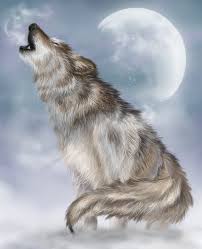
The debate will go on about the identity and character of the wolf. It would be hard to deny though that they are a proud and beautiful survivor of some of the hardest places in the world.
In the introduction to his recent Radio 4 programme, “Sharing our lives with Wolves”, Monty Don said of the wolf, “This tough and beautiful creature is the embodiment of the wild, from frozen Arctic tundra to the mountains of Ethiopia”.
You can listen again to this fascinating radio programme, first aired on 22nd December 2014, at http://www.bbc.co.uk/programmes/b04v381l
All wolves are wonderful but those that roam wild and farthest away from humans are the most beautiful and endangered species.
Snow wolves
The wolf has also been the subject of two exhilarating television episodes , “The Snow Wolf Family and Me”, also aired in December 2014 on BBC1. Gordon Buchannan, wildlife camerman & TV presenter, spent many weeks watching, learning and getting up close and personal to snow wolves on Ellesmere Island in Northern Canada. He filmed a most amazing account of how the snow wolf struggles to survive in one of the most forbidding places on earth. He wrote of his experience, ‘One of the best places and animals I’ve worked with. I just loved it’. Dr David Mech, who worked alongside Gordon Buchannan as main scientific advisor on ‘Snow Wolf’, has lived with the wolves on Ellesmere Island, for more than twenty five years and has learned many things which he believes alter what we think about snow wolves. He considers the three most important findings from his time in the Arctic to be:
- The new theory that wolves become breeders or ‘alphas’not by fighting each other to get ‘top dog’ slot, but by finding a mate and starting their own pack.
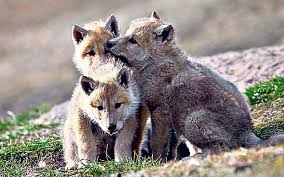
- Arctic wolves travel throughout the winter in the 24-hour darkness, before setting up dens after the pups are mobile.
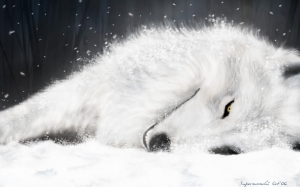
- There is evidence that wolves sometimes show “foresight and other higher-order reasoning when hunting”.
He also tells of a few things that surprised or shocked him. He tells of seeing a wounded wolf attacked by a pack that he was familiar with. It later died. He writes, “Seeing the wolves so friendly to each other but then seeing close-hand what they did was quiet shocking.” Another surprise came when he was watching a yearling wolf deliberately keep a young Arctic hare alive and bringing it to a pup. 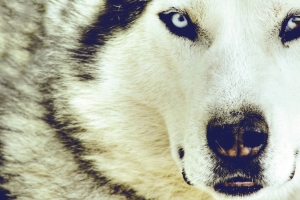 Snow Wolf Family and Me – watch both episodes, read the blog and meet the members of the Snow Wolf Family.
Snow Wolf Family and Me – watch both episodes, read the blog and meet the members of the Snow Wolf Family.
Ethiopian Wolves
Ethiopian wolves have long legs and a long, pointed muzzle and weigh between 11 and 19kg. They are a distinctive bright tawny red in colour with paler under parts and a black bushy tail. During the breeding season and pregnancy the female will turn a paler, more golden colour. There are thought to be fewer than 400 Ethiopian wolves remaining, and more than half of these are to be found in the Bale Mountains. 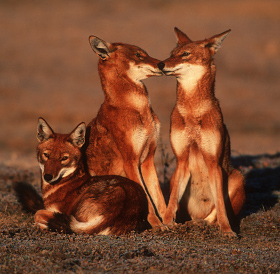
They forage and hunt alone with rodents making up over 90% of their diet. The have a narrow muzzle and small teeth help the wolf handle small prey. Ethiopian wolves live in close-knit territorial packs of between 3 and 13 adults, with a strong hierarchy. Although they hunt alone, they congregate for social greetings and territory patrols.
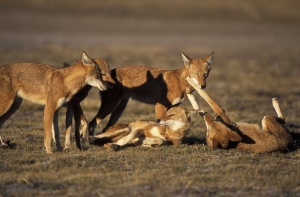 Male wolves rarely leave their pack of birth and they are typically an extended family. All members of the pack will assist in caring for the pups, helping to feed and protect them.
Male wolves rarely leave their pack of birth and they are typically an extended family. All members of the pack will assist in caring for the pups, helping to feed and protect them.
There is a unique opportunity for you to watch the wolves whilst helping with the long term survival of them by participating in a unique joint-venture conservation safari with the Ethiopian Wolf Conservation Programme and it’s Director Prof. Claudio Sillero.
7th – 16th November 2015 wolf watching & conservaton safari
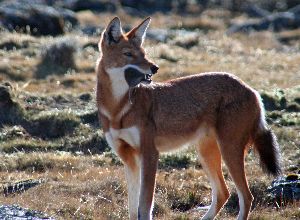 Ethiopian wolf images – AL Harrington & Nancy Gibson
Ethiopian wolf images – AL Harrington & Nancy Gibson
Maned Wolves
As the largest canid of South America, the Maned Wolf looks more like a large, long legged fox with a reddish coat and dark bushy mane. At around 3 feet tall to the shoulder, he typically weighs around 50 pounds. Its ears are large and long (7 inches), its throat and tip of the tail are white, and its legs are dark. He is also known for his distinctive odour, which has earned the maned wolf its nickname of “skunk wolf.” 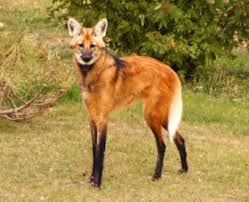
They live in open and semi-open habitats, savannah and marshland in central and south eastern Brazil, Paraguay, eastern Bolivia, and northern Argentina. Unlike most other wolves, the Maned Wolf does not form a pack. It hunts alone, usually between sundown and midnight. The male and female Maned Wolves live solitary lives, but come together only during the breeding season. 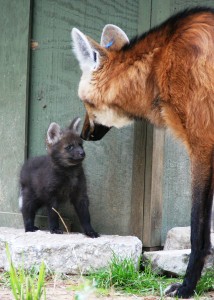 Monogamous pairs may defend a shared territory of about 30 km2 , though the individuals themselves may seldom meet, outside of mating. The mating season is from November to April, with gestation lasting 60 to 65 days. A litter may have from 2 to 6 black-furred pups, each weighing about 450 g (16 oz). These pups are fully grown in about one year. During that year, the pups are known to rely on their parents for food.
Monogamous pairs may defend a shared territory of about 30 km2 , though the individuals themselves may seldom meet, outside of mating. The mating season is from November to April, with gestation lasting 60 to 65 days. A litter may have from 2 to 6 black-furred pups, each weighing about 450 g (16 oz). These pups are fully grown in about one year. During that year, the pups are known to rely on their parents for food.
Maned Wolves are omnivorous, eating a varied diet of small mammals, insects, reptiles, birds, bird eggs, fruit, and vegetation. They use their large ears to good effect, rotating them to listen for prey animals in the grass. They tap the ground with a front foot to flush out the prey and pounce to catch dinner. 